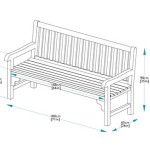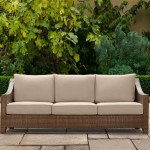Essential Aspects of Choosing the Best Oil to Treat Outdoor Wood Furniture
Protecting outdoor wood furniture from harsh weather conditions is crucial to ensuring its longevity and aesthetic appeal. One of the most effective ways to safeguard your furniture is by applying the right oil treatment. Choosing the best oil for your outdoor wood furniture requires careful consideration of several important factors.
1. Type of Wood
Different types of wood have varying densities and porosity, which influence their oil absorption capabilities. Hardwoods like teak and mahogany are naturally resistant to rot and decay, so they require less frequent oiling. Softer woods like cedar and pine, on the other hand, benefit from more frequent oil treatments to protect their open pores.
2. Climate Conditions
The climate in which your furniture is exposed plays a significant role in oil selection. Areas with high humidity and frequent rainfall demand oils with water-repellent properties. Oils with UV protection are essential in regions with intense sunlight to prevent fading and cracking.
3. Oil Type
There are three main types of oils commonly used for outdoor wood furniture: natural oils, penetrating oils, and film-forming oils.
- Natural oils, such as linseed oil and tung oil, penetrate deeply into the wood and provide long-lasting protection. They enhance the natural grain and patina of the wood.
- Penetrating oils, like teak oil and marine oil, soak into the wood fibers, protecting it from water and UV rays. They are ideal for hardwoods and furniture exposed to extreme weather conditions.
- Film-forming oils, such as polyurethane and varnish, create a protective layer on the wood's surface. They are more durable than natural or penetrating oils but can alter the natural appearance of the wood.
4. Application and Maintenance
The frequency and method of oil application depend on the oil type and climate conditions. Generally, natural oils require more frequent applications, while penetrating and film-forming oils offer longer protection. Follow the manufacturer's instructions carefully for optimal results.
5. Safety Considerations
Some oils, such as linseed oil, can emit volatile organic compounds (VOCs) during application and drying. Always work in a well-ventilated area and use a respirator if necessary. Dispose of used oil and rags properly to prevent environmental contamination.
Conclusion
Choosing the best oil to treat outdoor wood furniture involves considering the type of wood, climate conditions, oil type, application and maintenance requirements, and safety considerations. By selecting the right oil and following proper application and maintenance techniques, you can protect your outdoor wood furniture and enhance its beauty for years to come.

The Best Oil For Outdoor Furniture Real Milk Paint Co

Wood Oils A No Nonsense Guide Rawlins Paints Blog

What S The Best Oil To Treat Wooden Garden Furniture

The Best Oil For Outdoor Furniture Real Milk Paint Co

When And How Often To Treat Outdoor Wood Finishes Direct

Teak Oil The Best For Garden Furniture And Outdoor Wood

Wood Oils A No Nonsense Guide Rawlins Paints Blog

How To Re And Protect Outdoor Wood Furniture Love Grows Wild

The Best Oil For Outdoor Furniture Real Milk Paint Co

How To Protect Outdoor Wood Furniture Osmo
Related Posts








